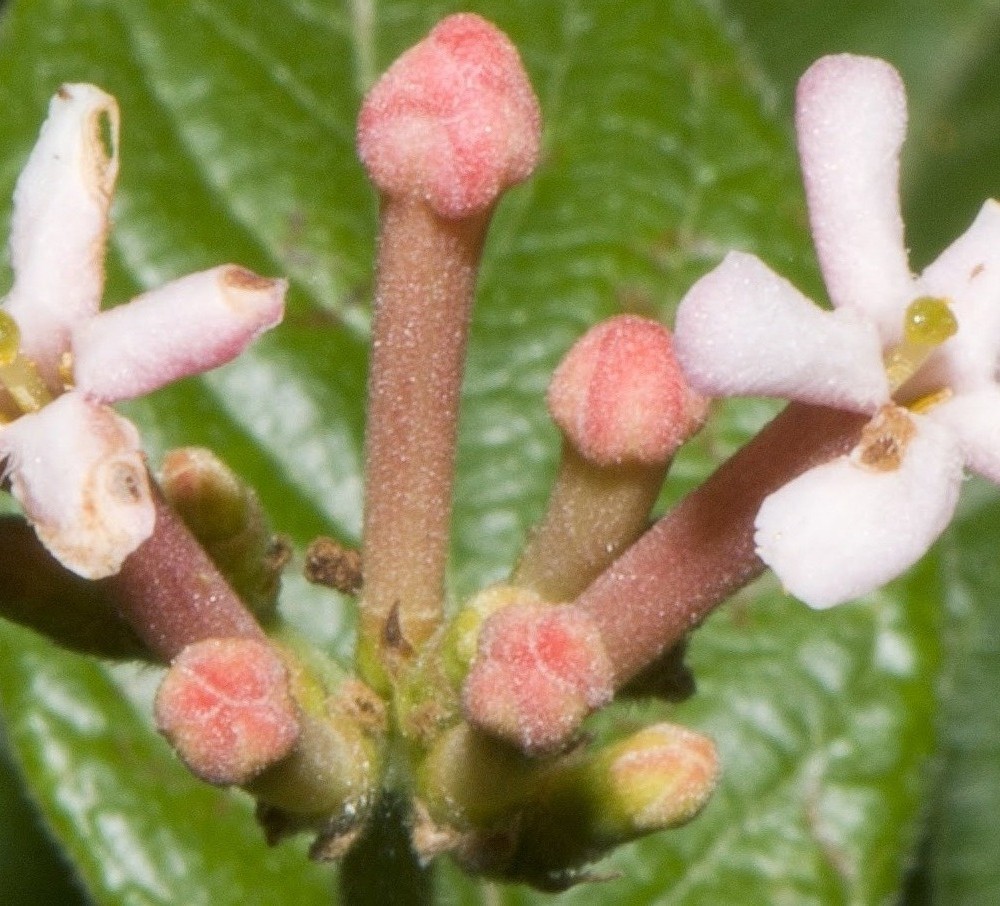Guettarda uruguensis
(Guettarda uruguensis)

Description
The "palo cruz" or "Uruguayan jasmine" is a botanical species of the Rubiaceae. It is a shrub 3-5 m tall, with opposite cross branches. It has evergreen to semi-evergreen foliage. The leaves are simple, opposite, ovate to ovate-oblong, sparsely pubescent, dark above and lighter below, short appressed hairs. Flowers in axillary inflorescences, cymoses, multiflora, very pedunculate, sessile, pinkish white; fragrant, corolla tubular, calyx persistent, ovary 3-locular. It blooms in spring and summer. The fruit is an ellipsoid drupe, velvety, black when ripe, 7-10 mm long. Fruits in late summer. Generally in humid areas: on the shores of rivers and streams. It is endemic to southeastern Brazil, Uruguay, Paraguay, and northeastern Argentina (as far as Martín García Island). Guettarda is a plant genus in the family Rubiaceae. Most of these plants are known by the common name velvetseed. Estimates of the number of species range from about 50 to 162.Most of the species are neotropical. Twenty are found in New Caledonia and one reaches Australia. A few others are found on islands and in coastal areas of the Indian and Pacific Oceans. Three species (G. odorata, G. scabra, G. speciosa) are known in cultivation.Guettarda argentea provides edible fruit. The type species for the genus is Guettarda speciosa. It is a tree of coastal habitats, up to 18 m (59 ft) in height. It is grown as an ornamental. Guettarda was named by Linnaeus in 1753 in his book Species Plantarum. This generic name is in honour of the 18th century French naturalist Jean-Étienne Guettard. The genus Guettarda is much in need of revision. Molecular phylogenetic studies have found it to be several times polyphyletic with some of its clades paraphyletic over small genera.
Taxonomic tree:







